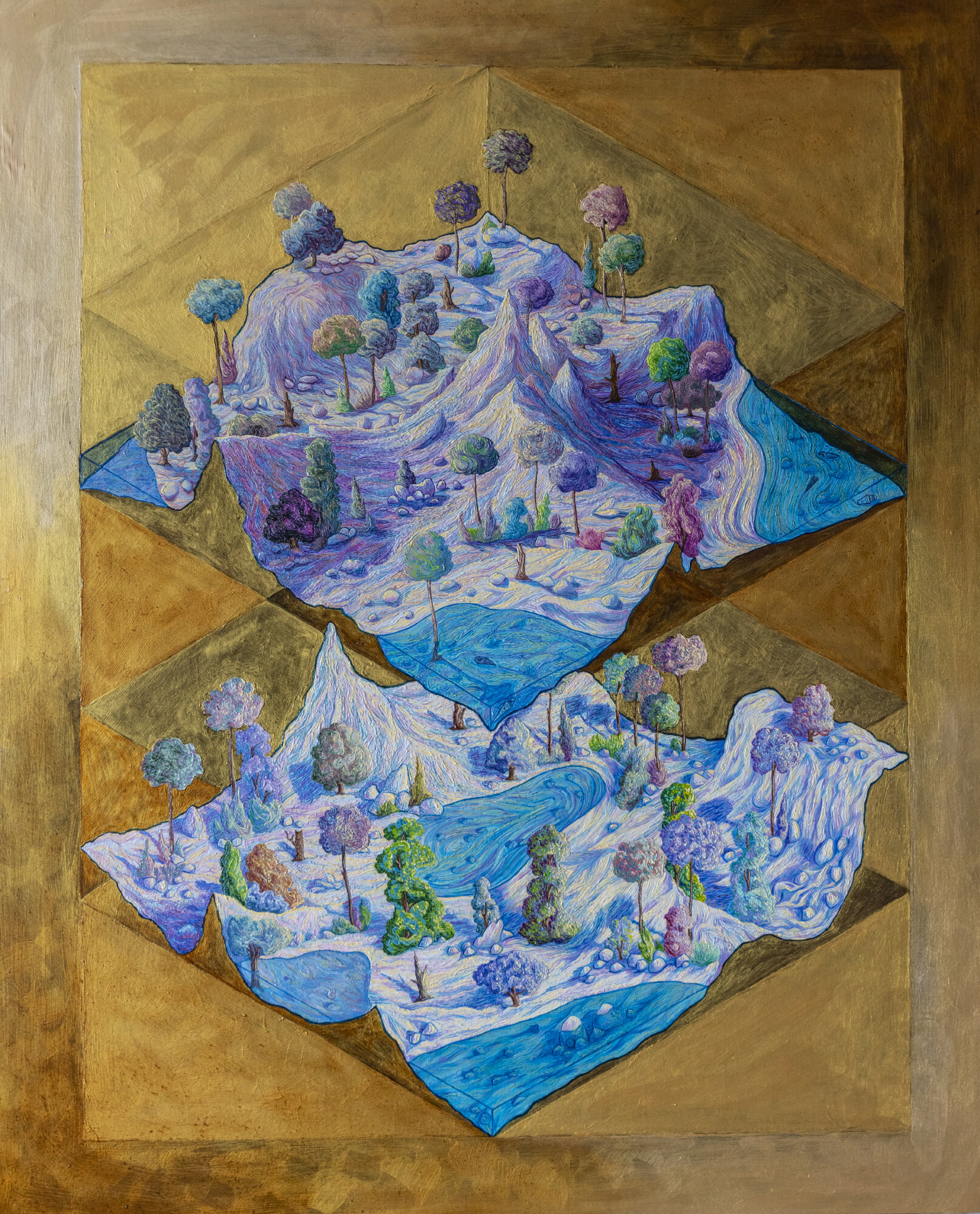


*Prices shown maybe subject to change
+Work shown may not be in stock, please contact us to confirm availability
Andrew Sales
Painter.
Andrew's subject matter is flexible but leans more to the figurative and representational forms in art. He draws a lot of ideas from historical painting mixed in with his own experiences, adding specific personal thoughts and invented myths to his images. He prefers his paintings to work as individuals, or as a limited series of paintings that communicate their own unique message or conceptual thread.
His practice seeks to play with the traditional norms of landscape and figurative painting and use it as a vessel to convey ideas and thoughts, both from observation and from personal interpretation. Andrew wants to take representational painting away from its regularities and use it in a more conceptually abstract and philosophical way, to communicate ideas of any scale through its associated imagery and preconceived expectations.
Instead of concentrating his practice to a narrow lens he is always keen to change its discourse, concept or theme, keeping his practice in constant development. Each painting is made to communicate its own associated idea or message with the viewer and to do this in the most moving and potentially serendipitous way possible. The paintings aim to have a direct and engaging concept yet paradoxically try to balance this with ambiguity and unease in order to allow a viewer to bring their own experience to the work. He believes the audience's search for meaning in the picture will open doors into their own thoughts and personal visual library, that in turn, may provide some emotional experience for them due to seeing the work.
Andrew always looks to achieve a harmony between colour, composition and concept with each painting. Going so far as to making the shape and dimensions of the wooden panels used and the application of the paint relate to the concept and themes of that particular painting. He doesn't want to throw unrelated ideas together but to let every part of the image relate to and amplify the cryptic message or narrative that is being used as subject matter. In the early conceptual stages this means allowing certain symbols and metaphors associated with the central idea to be discovered as the final painting is planned out.
Much of the work is intended to be allegorical, as he creates archetypal characters and imagined landscapes that interact with each other, expressing an alternate narrative disguised within a set of imagined rules and aesthetic pictorial judgments. He observes very few physical objects or spaces to create paintings but appropriates digital reproductions of historic painting and images offered by film and literature. In a way, Andrew's painting process both reflects and utilizes the media saturated world we live in today to make handmade, concentrated images that are the material antithesis of the media that inspired them.
His studio practice consists of using traditional oil painting methods with respect but also subverting them and prioritising the harmony of the composition and colour with the associated themes and message of the painting. The aim is to be adventurous in using different methods and constantly look to improve the process from the conceptual and developmental stages of each painting, through to the execution and final polished work. He is very interested in the materiality of paint through its application to the surface and varying fluidity, experimenting with a range of textures, layers and glazes as appropriate to achieve the maximum effects. Andrew's technique requires bold under drawing and the use of glazes and altering fluidity through thick and thin layers to create the appropriate atmosphere and effects. He is well aware of historic painting techniques and regards his own method as an appropriation of academic painting mixed with various other influences in brushwork and colour from both contemporary and historic painters.
